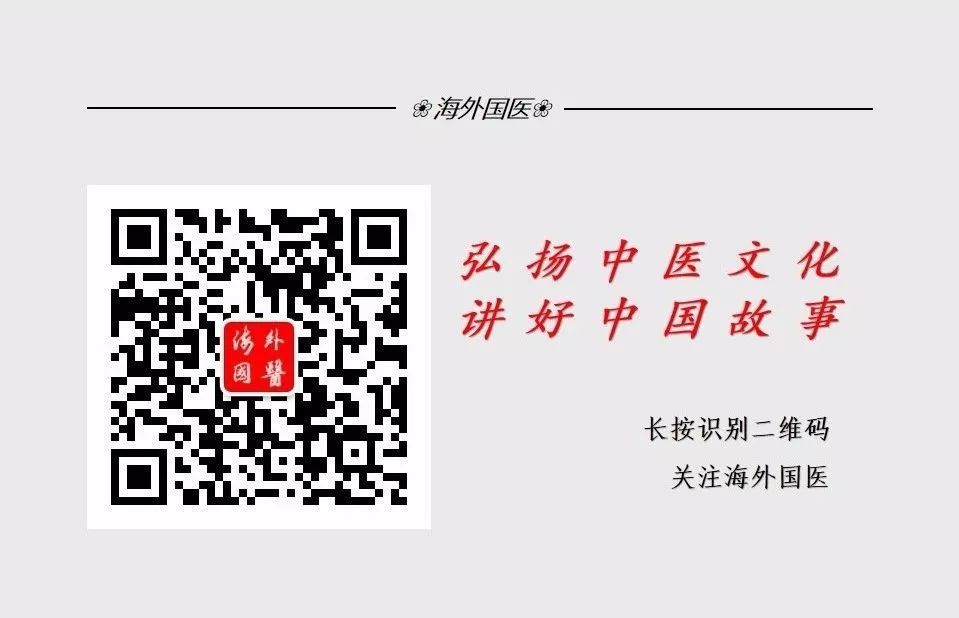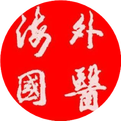Coix seed (Yìyǐrén) is the mature fruit of the annual herb Coix lacryma-jobi, belonging to the Poaceae family. It has a sweet and bland flavor, with a slightly cold nature, and is associated with the spleen, stomach, lung, and kidney meridians. It is known for its ability to strengthen the spleen, nourish the lungs, clear heat, and eliminate dampness, commonly used for conditions such as diarrhea, edema, dampness obstructing the channels, lung atrophy, lung abscess, and intestinal abscess with turbid urine. The typical dosage is 9 to 30 grams.
Coix seed has a long history of medicinal use, being classified as a superior herb in the “Shennong Bencao Jing” (Shennong’s Classic of Materia Medica). In the Tang Dynasty, the “Guangji Fang” mentioned cooking rice and porridge with coix seed, while the Song Dynasty’s “Shiyi Xinjing” and Ming Dynasty’s Li Shizhen’s “Bencao Gangmu” further discussed its use in porridge for treating diseases, claiming that regular consumption contributes to longevity. Modern studies have confirmed its antiviral and anti-cancer properties. Inspired by these findings and years of clinical practice, coix seed has been frequently used in treating difficult diseases with remarkable efficacy, as detailed below.
Multiple Lipomas and Polyps
Lipomas and polyps are often caused by the accumulation of phlegm and dampness. Therefore, coix seed is used to transform phlegm and dampness to address the root cause. Depending on the diagnosis, additional herbs may be added: for gallbladder polyps, herbs that regulate qi and invigorate blood may be included; for intestinal polyps, herbs that strengthen the spleen and boost qi can be added; for lipomas, herbs that soften and dissipate masses may be included.
Case 1: Li, Male, 22 years old, Worker, Initial Diagnosis Date: April 15, 1993.
The patient presented with blood and mucus in the stool, accompanied by reduced appetite and diarrhea after eating for over two years. In March 1993, symptoms worsened, with intermittent lower abdominal pain and daily diarrhea exceeding three times, with bright red blood in the stool, urgency, and overall fatigue leading to weight loss. He was diagnosed at a hospital where an X-ray barium enema revealed numerous small round or bean-shaped filling defects in the rectum and sigmoid colon, the largest being about 2 cm in diameter, with normal mucosal appearance lost and the wall being soft and distensible. A biopsy of the rectal nodules confirmed intestinal polyps. Surgery was recommended for resection of the rectum and sigmoid colon, but the patient refused and sought TCM treatment instead.
The patient appeared pale, with a pale tongue and a white greasy coating, and a fine slippery pulse. The diagnosis indicated spleen qi deficiency leading to blood stagnation, with phlegm and dampness obstructing the large intestine. The treatment principle was to strengthen the spleen, boost qi, eliminate dampness, and stop bleeding. The prescription included:
Raw coix seed (Yìyǐrén) (in a cloth bag) 120g, white mustard seed (Báijièzǐ) 10g, huangbai (Huangbai) 10g, roasted ginger (Pàojiāng) 10g, poria (Fúlíng) 15g, codonopsis (Dǎngshēn) 15g, fried white atractylodes (Shǔbái zhú) 15g, charred earth elm (Jiāo Dìyú) 15g, plantago seeds (Chēqiánzǐ) (in a cloth bag) 15g, honey-fried licorice (Zhìgāncǎo) 10g.
After taking this formula for 30 doses, the patient’s bowel movements returned to normal, abdominal pain disappeared, and appetite improved. Subsequently, coix seed was used as the main ingredient, combined with herbs to strengthen the spleen, boost qi, and nourish blood for consolidation. Six months later, a follow-up barium enema showed that all intestinal polyps had fallen off, and the mucosa returned to normal.
Case 2: Yu, Female, 50 years old, Official, Initial Diagnosis Date: November 6, 1993.
The patient had scattered nodules the size of soybeans on both upper arms for three years, which were soft to the touch and with normal skin color, and she did not pay much attention to them. The nodules gradually enlarged and multiplied, spreading to the trunk and lower limbs, varying in size from soybeans to chicken eggs, with local discomfort. In March 1993, she visited a hospital where a pathological examination confirmed the diagnosis of lipoma. Due to the multiplicity, complete surgical removal was not possible, so she sought TCM treatment.
The patient had a white greasy tongue coating and a slippery pulse, indicating qi stagnation and blood stasis with phlegm dampness accumulation. The treatment principle was to regulate qi, invigorate blood, transform phlegm, and soften masses. The prescription included:
Raw coix seed (Yìyǐrén) (in a cloth bag) 120g, angelica tail (Dāngguī wěi) 30g, red peony (Chìsháo) 15g, green tangerine peel (Qīngpí) 15g, dried tangerine peel (Chénpí) 15g, processed pinellia (Zhìbànxià) 10g, poria (Fúlíng) 15g, scrophularia (Xuánshēn) 15g, raw oyster (Shēngmǔlì) (pre-boiled) 30g, Zhejiang fritillary bulb (Zhèběimǔ) 15g. After taking this formula for over four months, all nodules disappeared, and skin color returned to normal.
Cancerous Tumors
Many studies have reported that coix seed has the ability to inhibit cancer cells. Extensive clinical practice has proven that coix seed not only inhibits the growth of cancer cells but can also eliminate tumors.
Case: Zhang, Male, 48 years old, Farmer, Initial Diagnosis Date: October 2, 1992.
The patient experienced chest tightness and cough with red phlegm for over six months, with symptoms gradually worsening and ineffective treatment with general anti-inflammatory medications. A chest X-ray at a major hospital revealed a 4cm x 5.6cm ill-defined shadow in the right middle lobe. Sputum cytology showed large, atypical squamous epithelial cells, with occasional naked nuclei of cancer cells. The Western medical diagnosis was lung cancer, and hospitalization for surgical treatment was recommended. Due to financial difficulties, the patient turned to TCM.
At that time, the patient appeared pale, with chest pain, shortness of breath, cough, and pink phlegm, a pale tongue with a white coating, and a weak pulse. The treatment principle was to regulate qi, invigorate blood, transform phlegm, and soften masses. Due to financial constraints, the patient was treated with coix seed porridge, consisting of 120g raw coix seed (Yìyǐrén), 100g millet (or rice), and 10 jujubes, cooked daily as one dose.
After taking this for over two months, chest pain and shortness of breath improved, cough decreased, and phlegm turned white. Continuing for over three months, symptoms basically disappeared. After more than six months of treatment, a follow-up chest X-ray showed no abnormalities in the heart and lungs, indicating that the disease had been cured.
Aortitis
Coix seed has a unique ability to clear heat and reduce inflammation, making it particularly effective for vasculitis. The author has frequently used coix seed in vascular diseases, achieving remarkable results, having treated over 20 cases of aortitis, all of which were cured.
Case: Li, Female, 24 years old, Worker, Initial Diagnosis Date: October 2, 2006.
The patient felt coldness and soreness in the right upper limb for a year, with symptoms worsening during activity, and had not received any treatment. Symptoms gradually worsened, accompanied by dizziness and discomfort in the right eye. In August 2006, she visited a hospital where the right upper limb blood pressure could not be measured, and the right carotid and temporal artery pulses were weak, with a vascular murmur heard during systole at the right carotid artery. The right eye fundus showed slight pallor; a cerebral blood flow study indicated reduced blood flow to the right side; blood tests showed an erythrocyte sedimentation rate of 32mm/hour and a white blood cell count of 2.3 × 10^9/L. The Western medical diagnosis was polyarteritis, and after a month of Western treatment, there was no significant improvement, leading her to seek TCM treatment on October 2.
The patient had a pale tongue with purple spots on the edges, a white greasy coating, and a disappearing pulse at the right cun position, with a weak and slow pulse at the left cun position. The diagnosis indicated qi deficiency and blood stasis with damp-heat obstructing the channels. The treatment principle was to tonify qi, invigorate blood, and clear heat to open the channels. The prescription included:
Raw coix seed (Yìyǐrén) (in a cloth bag) 120g, cinnamon twig (Guìzhī) 10g, astragalus (Huángqí) 30g, chicken blood vine (Jīxuèténg) 30g, processed myrrh (Zhìmòyào) 10g, salvia (Dānsēn) 30g, wide cardamom (Guǎngmùxiāng) 10g, and ligusticum (Lùlùtōng) 10g. After taking this formula for over four months, symptoms disappeared, and the right arm blood pressure returned to normal, with normal pulse at the right cun position and all tests returning to normal ranges.
Cerebral Arteriosclerosis
Cerebral arteriosclerosis is often caused by phlegm and dampness obstructing the orifices, affecting the entire body. Using coix seed primarily to transform phlegm and dampness yields quick results.
Case: Huo, Male, 72 years old, Initial Diagnosis Date: May 22, 1994.
The patient began experiencing numbness in both upper limbs and reduced skin sensation in the palms since May 1992, without treatment. In February 1994, he developed facial swelling and weakness in both lower limbs, with instability while standing and walking. Doppler examination indicated reduced elasticity of the internal carotid artery and insufficient blood supply to the bilateral vertebrobasilar arteries. Blood lipid tests showed total cholesterol at 7.61mmol/L, triglycerides (TG) at 3.52mmol/L, and low-density lipoprotein cholesterol at 6mmol/L. The Western medical diagnosis was cerebral arteriosclerosis. After two months of hospitalization and Western treatment, there was no significant improvement, leading him to seek TCM treatment on May 22, 1994.
Symptoms included slow movements, unsteady walking, a blank expression, a white greasy tongue coating, and a slow and wiry pulse. The diagnosis indicated internal obstruction of phlegm and dampness affecting the entire body. The treatment principle was to transform phlegm, open the orifices, invigorate blood, and open the channels.
The prescription consisted of raw coix seed (Yìyǐrén) 120g, raw hawthorn (Shēngshānzhā) 30g, rice (or millet) 60g, and 10 jujubes. Cooked as porridge, one dose daily.
After intermittent consumption of the porridge for nearly six months, the patient felt mentally clearer, numbness in the upper limbs disappeared, and walking became stable. A follow-up on July 20, 1995, showed all tests within normal ranges.
Conclusion
The role of coix seed in treating difficult diseases can be glimpsed through the above cases. In difficult diseases characterized by phlegm, dampness, or heat, with a white greasy or yellow greasy tongue coating and a slippery or rapid pulse, coix seed can be used in larger quantities. Coix seed has a neutral nature and no adverse reactions, making it suitable for long-term use.
In addition to treating aortitis, it has also shown satisfactory results in cerebral arteriosclerosis, coronary artery insufficiency, thromboangiitis obliterans, embolic venous inflammation, and cavernous hemangiomas.
Coix seed has the ability to transform phlegm and soften masses, making it effective for treating multiple polyps, multiple lipomas, and cancerous tumors.
Coix seed possesses antiviral properties, enhancing the body’s antiviral capabilities, thus can be used to treat viral skin warts, viral myocarditis, and diseases with immune dysfunction.
This article is sourced from the internet. We share articles and images from the internet, with copyright belonging to the original authors and sources. This article is for educational sharing and dissemination of more information, with no commercial purpose.

Click here to read: The truth that Western medicine cannot explain, finally revealed (save it)Why do some people like to grind their teeth while sleeping?Basic knowledge of TCM, too precious, be sure to save it!Click “Read the original text“↙ to see more exciting content

